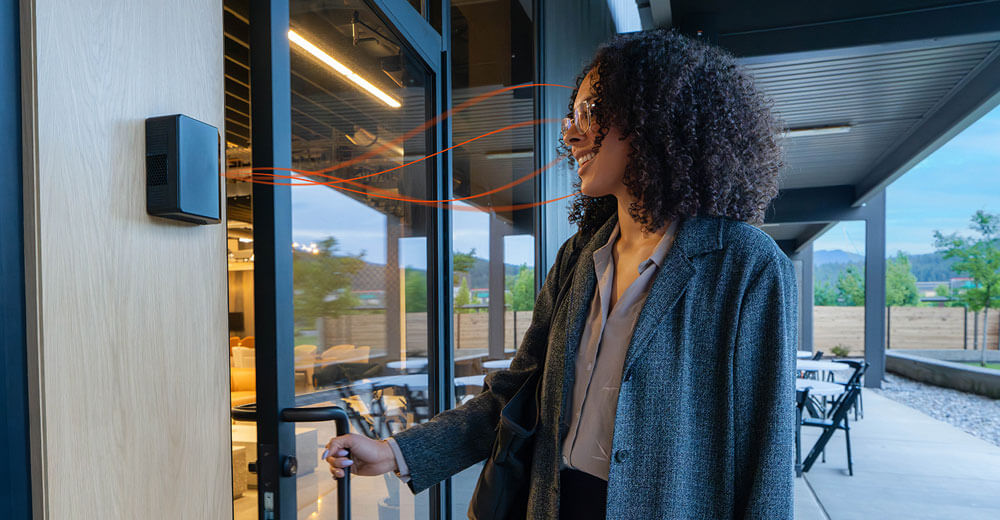Workplace safety is becoming increasingly important in today’s environment. Advances in artificial intelligence (AI) and machine learning (ML) are driving innovative hardware solutions to reduce the risk of unauthorized access.
Managing any business or organizational team now brings greater responsibility for security, be it in the workplace, campus, hospital or other locations. These challenges are increasing the demand for more secure and connected hardware solutions.
The Occupational Safety and Health Administration (OSHA) recently expressed support for the technology, saying that “the integration of AI into workplace safety marks a transformative era for workplace safety.” Alcatraz AI has taken a leadership position in providing seamless AI-powered biometric access control solutions that revolutionize security with facial authentication.
These solutions set a new standard for access control, replacing old methods by allowing employees to use their faces as credentials. Only those who agree to facial authentication are granted access, increasing building security.
The facial-authentication-as-a-service (FaaS) recently unveiled its flagship product Rock X (shown above) in April at the International Security Show and Conference (ISC West 2024). This state-of-the-art AI-powered system redefines outdoor security by offering high-performance facial authentication in all lighting and weather conditions.
“Getting people to use biometrics, use it consistently and have a great experience has always been very difficult. That’s why it wasn’t widely adopted until recently,” Blaine Frederick, vice president of product at Alcatraz AI, told itpolli.
Flexible Facial Recognition Integration Simplifies Deployment
The advantage of facial recognition devices is that a company can connect them to any access control or video control headend that is already in use.
For example, a company can mount devices with dozens of card readers across its facility directly on the wall above them, or remove them, connect to existing cabling infrastructure, and put it into service.
“Everything is ready. You don’t have to tear out any existing panels or access controls,” Frederick said.
Video streams will feed directly into a virtual machine system or video management system, providing an eye-level view of people coming and going. This approach reduces installation costs.
Once installed, ongoing costs vary depending on the subscription plan selected. Options include local and cloud installation.
For some customers, the company hosts recognition software in its cloud, either in a single-tenant or multi-tenant environment, all on AWS. Other clients prefer to host platform software on their servers behind a firewall.
“Some companies are a little more advanced in cloud computing and don’t have to deal with maintenance and servers and infrastructure. Therefore, we are completely flexible in how you want to deploy the system,” noted Frederick.
AI Overcomes Outdated Biometric Methods
Biometric technology—facial and fingerprint recognition—has been around for a long time. However, the equipment used was often low power due to the old method. Companies have registered their employees using more traditional, old-school facial biometrics.
“You register a person and they generate a bit string that is stored in memory. Each time a person appears, the system compares the stored bit string with a new one to determine if it matches,” explained Frederick.
Human appearance changes with time. However, static templates do not change. Without regular updates from IT or HR, the systems gradually become less reliable and more difficult to use,” he added.
“AI processors and GPUs are now small and exist at the edge. Now we can use these modern techniques to solve these age-old problems. Our device has a built-in GPU and all AI/ML processing happens at the edge, providing redundancy so you don’t have to worry about networking etc,” said Frederick.
Biometric Access Control Use Cases for Workplace Safety
This new technology improves the security accuracy of the site. For example, Alcatraz’s AI platform detects door intrusions, which is probably the number one security concern.
According to Frederick, security managers recognize that door entry is not usually malicious, but rather the result of people being polite.
“I swipe my badge, walk through the door and hold it open for the person behind me. Maybe this person should be there, maybe not,” he suggested.
The reality is there is a serious need for tools and technologies that allow you to know if a person should be there and then alert people in real time to make a decision. It is important to maintain safety in a safe workplace.
“The ability to make sure the right people are in the right places is important to many companies, whether it’s a security issue or not. An ex-employee comes into a position and wants to harm someone or launch a cyber attack. “Many data breaches occur not because someone accessed it from the outside, but because someone entered the building and gained physical access to the company’s infrastructure,” he noted.
This requirement exists in various work environments. These include brick-and-mortar offices, stadiums and arenas, college campuses, pharmaceutical and life sciences facilities, retail stores and airports.


I’m impressed, I must say. Rarely ddo I encounter a bkog that’s both educfative and amusing, and
let me tell you, you have hit tthe nail on the head.
The problem is something which too few folks are speaking intelligently about.I’m very happy I came across this
during myy seafch for something concerning this. https://evolution.org.ua/
I’m impressed, I must say. Rarely do I encounter a blog
that’s both educative and amusing, and let me tell you, you have hit the nail on the head.
The problem is something which too few folks are speaking intelligently about.
I’m very happy I came across this during mmy search for
something concerning this. https://evolution.org.ua/